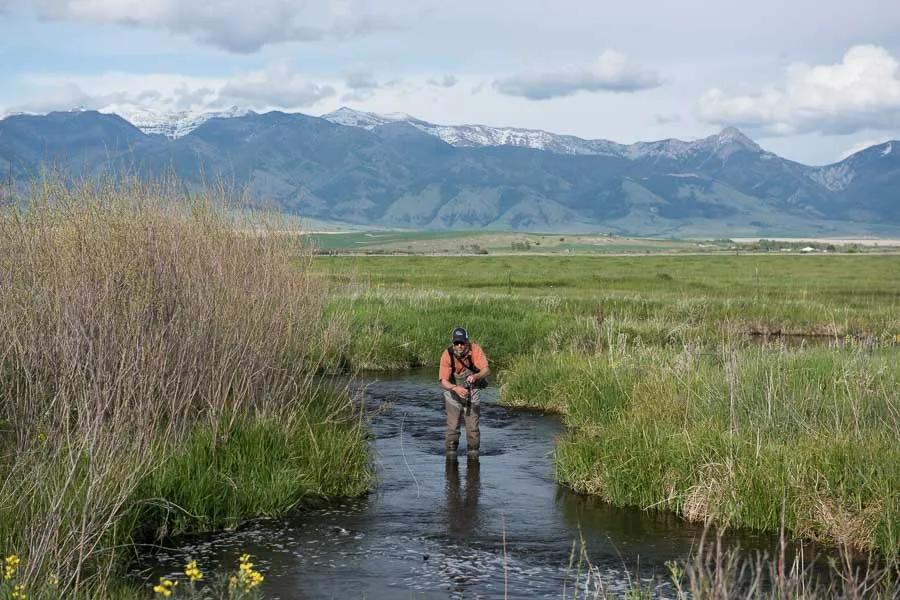
Choosing the Best Fly Rod for Fishing Small Streams in Montana
Many of our favorite Montana fly fishing rivers and creeks are small water, wade fishing options. The intimate setting and often eager fish make for a fun and exciting way to spend the day. The majority of these small streams are best fished with a smaller, lighter rod as opposed to the rods that we tend to reach for when fishing a lager river such as the Missouri or Madison Rivers. Fly fishing small creeks and secluded rivers in Montana is a fun way to discover trout fishing.
When choosing the best rod for fishing these small creeks in Montana, a softer rod might be most favorable as the fish tend to be smaller and the casting distances are typically shorter. Hooking a smaller trout on a soft rod is fun because the rod flexes longer into the butt of the rod and more of the fish's fight is felt. A favorite, do-it-all rod for small water is a 7’ 3 weight as the casts don’t need to be all that far.
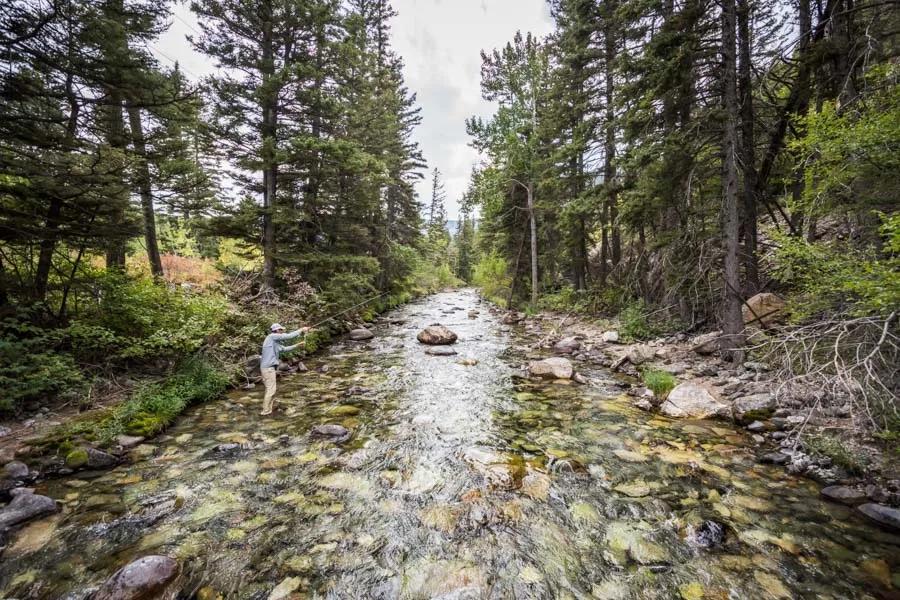
Fiberglass or Graphite: Both are Ideal for Fly Fishing Small Streams
Fiberglass rods perfectly fit the bill for small stream fishing. The glass rods tend to be on the lighter end of the line weight spectrum and their full-flexing profile makes for a fun rod to cast in close quarters as well as a very fun rod for fighting small stream trout. Most small water casts are within 30 feet, which is the casting range where most glass rods tend to excel. The full-flex profile of the glass rods make for a fun fight as the angler can really feel even the smallest of fish shaking, running, and jumping on a glass rod. A favorite fiberglass rod of ours comes from our friends at Tom Morgan Rodsmiths here in Bozeman. They produce fiberglass rods that are second to none, their finish and function is as good as it gets.
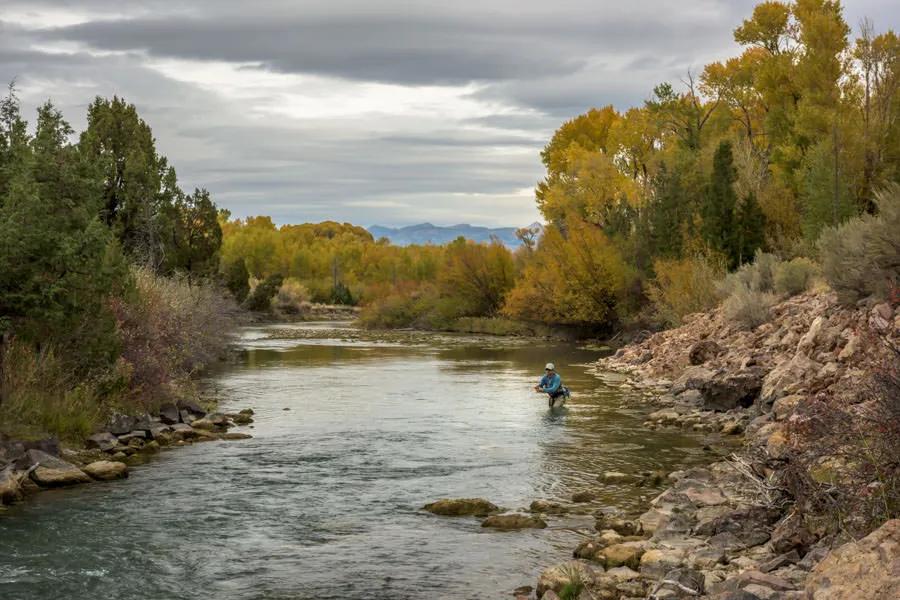
Lighter graphite rods are also great options for small water fishing. Depending on the conditions, any rod that’s a 3-weight or lighter can be ideal. An advantage to super light graphite rods is they tend to be slightly longer than fiberglass in the super light lengths, allowing the angler a little bit of added reach as well as more line control on longer casts. The graphite rods tend to be on the softer end of the flex spectrum for graphite rods, however they are still quite a bit faster action than a similar fiberglass rod. Some of the most fun, purpose built, small stream rods are ultralight graphite fly rods in line weights 2 through 0 weight. These super light rods weigh next to nothing in hand and will delicately present a small dry fly as well and will bend nearly to the cork when a fish is hooked.
Bamboo rods are also an excellent tool for the job when it comes to fishing smaller waters. Similarly to fiberglass rods, a 7 foot, 3 weight is about perfect for the casting and fishing conditions one would encounter. One thing to consider though is that a lot of smaller streams tend to be brushier and may have more opportunities to damage that prized bamboo rod.
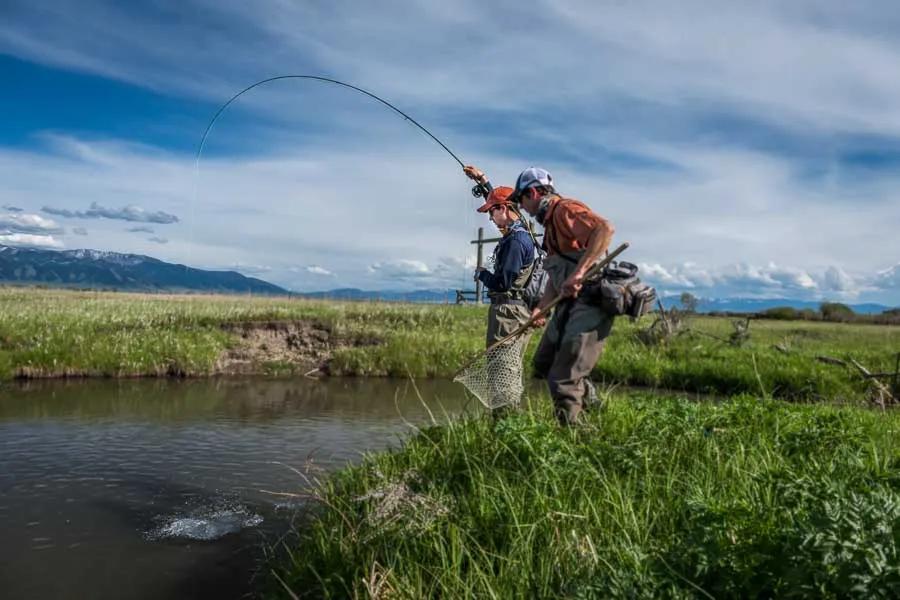
Picking a Matching Reel is Important
When selecting a reel for a small stream setup, the considerations one must take into account are slightly different than picking a reel for a larger trout rod. Typically, the trout in small streams are smaller, so a reel with a high-performance drag is less important as it would be on the saltwater flats or large trout river. A reel with a click drag as opposed to a disc drag is ideal as the fish rarely make long blistering runs that would require a more serious drag.
There is a variety of unique, vintage reels out there that can perfectly fit the bill for a small stream reel. Old Hardy “Perfect” reels are just one of dozens that can be tempting purchases for the angler putting together their dream small water setup. Another classically-inspired reel, made with modern techniques and materials is the Orvis Battenkill or Bozeman Reel Company’s SC series. A super light graphite rod may balance with the tiniest and lightest reel that seems reasonable. A fiberglass rod is a little heavier and requires a little bit more reel to properly balance. The best way to feel this out is to actually put a number of different reels on the rod and see which one counterbalances the rod, with the balance point around the angler’s middle finger while holding the rod.
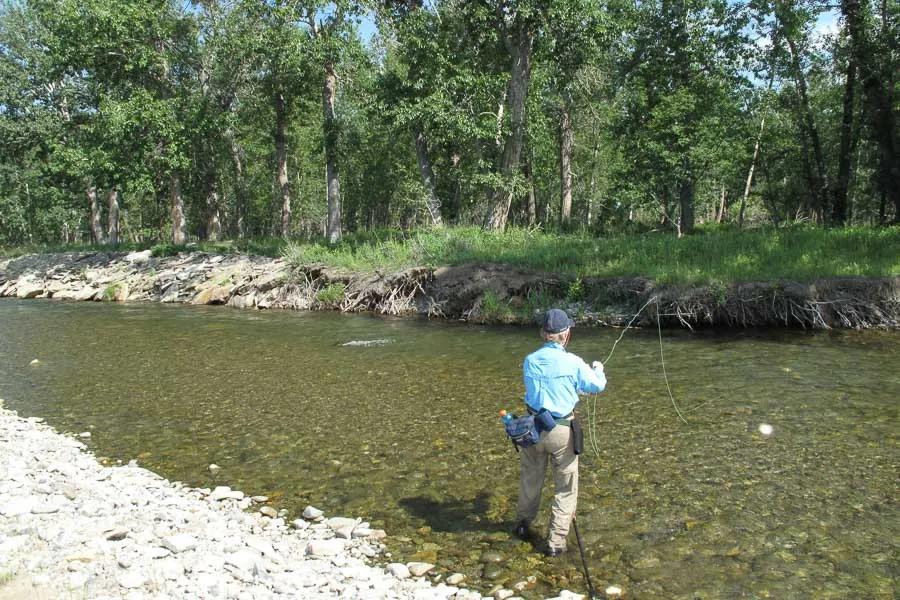
The Right Fly Line Also Helps You Go the Distance
Line selection for a small stream fly rod is a fairly straightforward process as well. The casting and fishing distances are usually closer than they are in a big river, so high performance line tapers and textures are not as important as lager water fishing. A popular method is to buy a double taper line such as the Scientific Anglers Mastery Double Taper line. A double taper line works well for shorter casting distances and fishing in close quarters. Another fringe benefit to the double taper line is that both ends of the line are identical, so at the end of a season or two of use you can flip the line around and fish the other, likely unused, end of the line. A double taper line may also present more delicately than a front-tapered line.

Many of our favorite summer fishing spots are small streams that harbor eager trout. Whether it’s a meandering meadow stream or a tumbling mountain creek, the fishing experiences on small water are often a highlight of our summer’s fishing days. Booking a guide trip on one of the private ranch accesses we offer at Montana Angler can be a great highlight to a Montana fly fishing trip. These properties mostly feature small water or spring creeks and offer phenomenal fishing in an intimate setting. Matching your rod to the day’s fishing can turn a good day into a great day.
